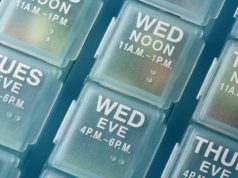Higher adherence, lower discontinuation versus exenatide once weekly or liraglutide
WEDNESDAY, Feb. 15, 2017 (HealthDay News) — For patients with type 2 diabetes mellitus (T2DM), dulaglutide is associated with higher adherence and lower discontinuation than exenatide once weekly (QW) or liraglutide, according to a study published online Feb. 9 in Diabetes, Obesity and Metabolism.
Carlos Alatorre, Ph.D., from Eli Lilly and Co. in Indianapolis, and colleagues compared dulaglutide with exenatide QW and dulaglutide with liraglutide in patients with T2DM. To account for selection bias, propensity score matching was used.
The researchers found that the mean adherence was higher for dulaglutide versus exenatide QW (0.72 versus 0.61) and liraglutide (0.71 versus 0.67; both P < 0.0001). A higher percentage of patients achieved a proportion of days covered ≥0.8 for dulaglutide versus exenatide QW (54.2 versus 37.9 percent) and liraglutide (53.5 versus 44.3 percent; both P < 0.0001). For all matched patients, the mean days on treatment was higher for dulaglutide versus exenatide QW (148.4 versus 123.6) and liraglutide (146 versus 137.4; both P < 0.0001). The proportion of patients that discontinued treatment was lower for dulaglutide versus exenatide QW (26.2 versus 48.4 percent) and liraglutide (28 versus 35.6 percent; both P < 0.0001).
“Dulaglutide initiators had significantly higher adherence, were more persistent, and had lower discontinuation compared to exenatide QW or liraglutide during the six-month follow up period,” the authors write.
Several authors were employees of Eli Lilly, which manufactures dulaglutide and provided funding to Truven Health Analytics for this study.
Full Text (subscription or payment may be required)
Copyright © 2017 HealthDay. All rights reserved.








